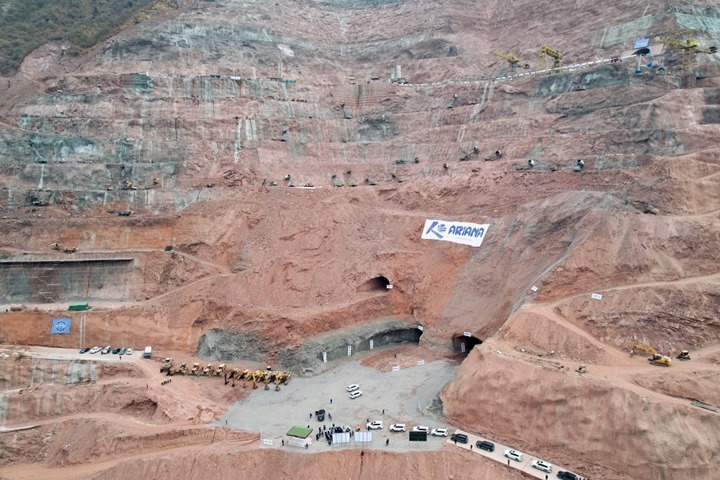Building the Rogun Dam in Tajikistan to its maximum projected height and specifications would be an economic disaster for Central Asia’s poorest nation, and an environmental nightmare for the entire region, according to a newly published expert report. The advent of new technologies for electricity generation means that Tajikistan’s already decades-old mega project would be outdated before it became fully operational.

The report, compiled by the Kazakhstan-based environmental organization Rivers Without Boundaries, is being distributed shortly before a World Bank Board of Directors meeting, scheduled for December 17, is due to discuss financing options for the Rogun project, the costs of which have spiraled upward in recent years. Current projections put the price tag of completing the dam at its projected height of 335 meters at $6.4 billion.
The project was first conceived in the 1970s and revived by the Tajik government in 2016. Work has continued on the dam sporadically since then.
Experts assembled by Rivers Without Boundaries compiled data on eight different scenarios for achieving the Rogun project’s intended goal of producing enough electricity to both meet the country’s domestic needs and generate revenue via the export of power. The results contained in the report suggest that a mix of renewable power generation, along with the completion of a significantly smaller Rogun Dam, would be the optimal solution.
“Our preliminary calculations of alternative scenarios for project implementation show the combination of solar generation development with the completion of Rogun HPP with a smaller dam may make it possible to fully cover the winter energy deficit in Tajikistan by 2030-2031,” the report states. The “diversification of energy sources within the unified energy system of the country will also significantly reduce climate change risks for the energy sector and the economy.”
The environmental and social impact assessments that officials are relying on for the Rogun project are outdated, relying on over decade-old data, according to the report. Since then, there have been major advances in wind and solar power generation technologies, and the risks posed by global warming in Central Asia have risen. “One of the recurrent planning mistakes made each time this project has been revived and reviewed is the lack of assessment of alternative solutions to the project’s challenges,” the report states.
When completed the 335-meter-tall dam would have an annual power-generating capacity of 3,600 megawatts, roughly equivalent to the output of three nuclear plants. But by the time the facility can reach full generating capacity, the cost of its electricity would be uncompetitive compared to renewable sources, the report asserted. The unit cost of building Rogun is up to four times higher than that of a solar power plant (SPP).
“The cost of Rogun’s electricity will be more expensive than that produced by solar photovoltaics (SPP) and wind (WPP) power plants. If Tajikistan intends to become an electricity exporter to its neighbors, it needs to develop SPP and WPP,” the report adds.
A new environmental impact study, along with a comprehensive regional water-usage framework, is needed, before any additional financing for Rogun is allocated, Rivers Without Boundaries argues. Environmentalists say the alteration of the water flows of the Vaksh and Amu Darya rivers caused by Rogun construction and operation to date already has degraded regional ecosystems, and “worsened conditions for irrigation in dry years.”
Rogun would also be a potent source of greenhouse gasses at a time when Central Asia is straining to curtail emissions as part of an effort to slow global warming. The draft environmental impact assessment currently in use shows that Rogun will “still have a large carbon footprint,” the report states. “ The completion of the Rogun HPP with the highest dam [335-meter level] will not only fail to result in rapid decarbonization of Central Asian energy systems, but rather, on the contrary, will slow down this process.”






Leave a Reply